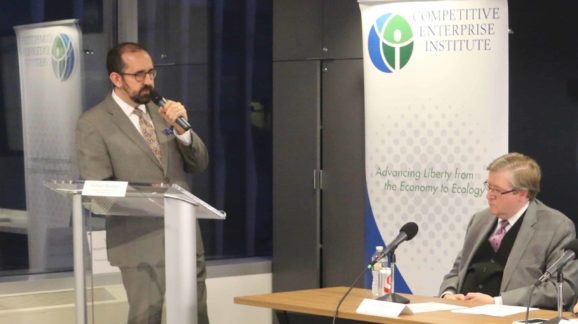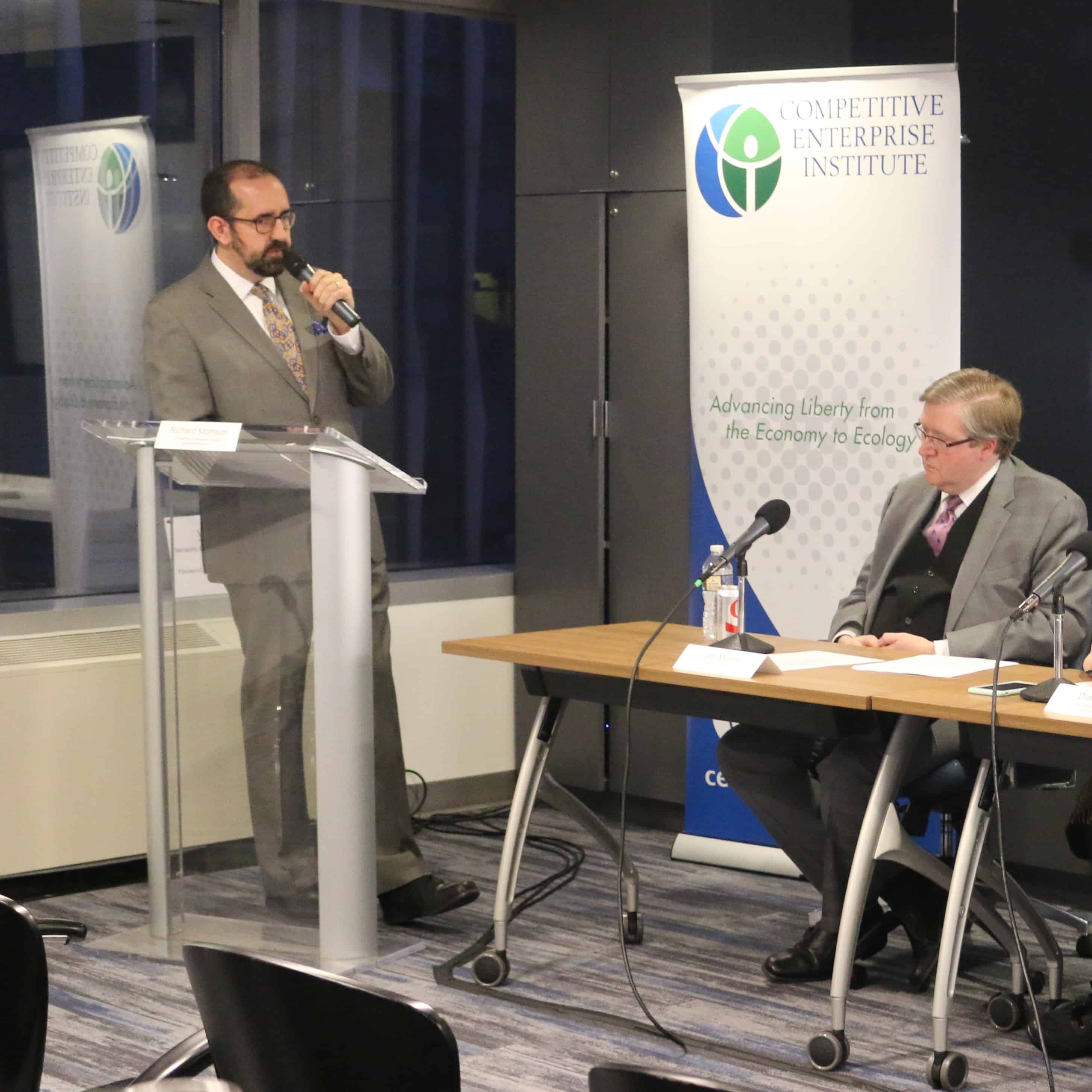Introduction to ‘Reorganizing the Executive Branch’

Competitive Enterprise Institute Senior Editor Richard Morrison delivered these opening remarks at CEI’s recent policy panel event, “The Future of the Executive Branch,” on Wednesday, November 15th.
 Good afternoon everyone, I’m Richard Morrison, Senior Editor here at the Competitive Enterprise Institute. Welcome to “The Future of the Executive Branch,” our panel discussion on executive reorganization in the Trump administration.
Good afternoon everyone, I’m Richard Morrison, Senior Editor here at the Competitive Enterprise Institute. Welcome to “The Future of the Executive Branch,” our panel discussion on executive reorganization in the Trump administration.
As you may know, President Trump signed an executive order in March titled “Comprehensive Plan for Reorganizing the Executive Branch” with the goal of “improv[ing] the efficiency, effectiveness, and accountability of the executive branch [by] … reorganiz[ing] governmental functions and eliminate[ing] unnecessary agencies.” The order calls on the director of the Office and Management and Budget, in this case Mick Mulvaney, to publish a notice in the Federal Register inviting public comment and then to prepare a comprehensive report that will include “recommendations to eliminate unnecessary agencies, components of agencies, and agency programs, and to merge functions.”
That advice has since been solicited and submitted by organizations like CEI and the Heritage Foundation and the Cato Institute, and the staff at OMB are well along the way of sifting through the submissions and, along with their own analysis, incorporating them into the report the president has asked for. We’re expecting that to be released sometime early next year.
In the meantime, we’re all sharpening our own vision of how the executive branch can be rationalized, right-sized, streamlined, and otherwise reformed so that its component agencies are delivering actual services to the nation’s taxpayers rather than regulating them out of their jobs and businesses.
Now a friend of mine reminded me this week that virtually every modern presidency has included some pro-forma effort or taskforce to re-organize the federal bureaucracy to function better—often with uninspiring results. This White House, however, I think is willing to actually do it. From former chief strategist Steve Bannon’s early talk about “dismantling the regulatory state” to the administration’s impressive early moves on regulatory reform, there is an appetite for and commitment to dramatic change in how the federal government operates.
And while we consider the scope of that ambition, we should remember what this is all about—returning our federal government to its proper constitutional and statutory limits, and providing the best possible services to this nation’s citizens, in exchange for the significant burden of taxation and regulation that our federal government imposes. Part of that will mean combining redundant programs, part of it will include spinning off duties to either for-profit or private nonprofit providers, and part of it will entail some things are no longer being done by anyone because they shouldn’t have been done in the first place.
With that, I’d like to turn the discussion over to our distinguished panelists. First up is my colleague Iain Murray, Vice President for Strategy here at the Competitive Enterprise Institute. Iain’s team covers finance and banking, labor, trade, and health and safety issues, and he was one of the lead authors of CEI’s recent study on executive reorganization, Shrinking Government Bureaucracy, which is available at the back of the room.
Next up is Diane Katz, a Senior Research Fellow in Regulatory Policy at the Heritage Foundation. Diane is a veteran journalist and policy analyst and has written on everything from flood insurance to the Export-Import Bank to the Environmental Protection Agency to the Consumer Finance Protection Bureau.
Rounding out our line-up is Chris Edwards, Director of Tax Policy Studies at the Cato Institute and the editor of DownsizingGovernment.org. He is a top expert on federal and state tax and budget issues, and has a long list of previous affiliations as well.
They’ve all been to impressive colleges, written for influential publications, and been interviewed on high-profile media outlets, but, of course if they’re up here right now, you knew that already. So without further ado, let’s have Iain lead us off.
For more details on and video of the event, see here.